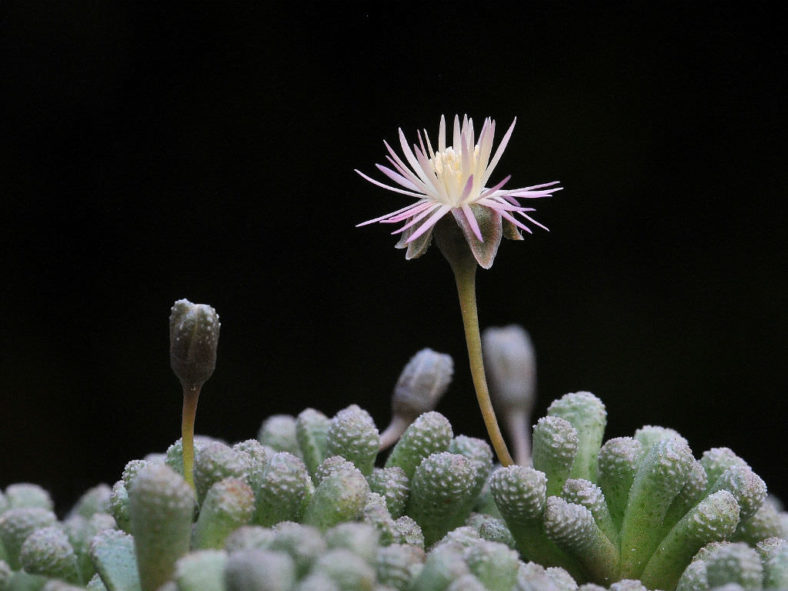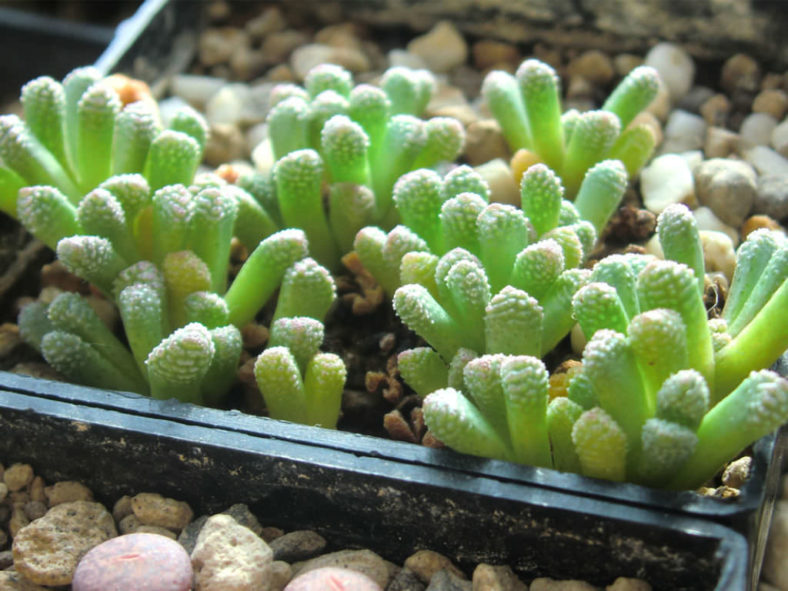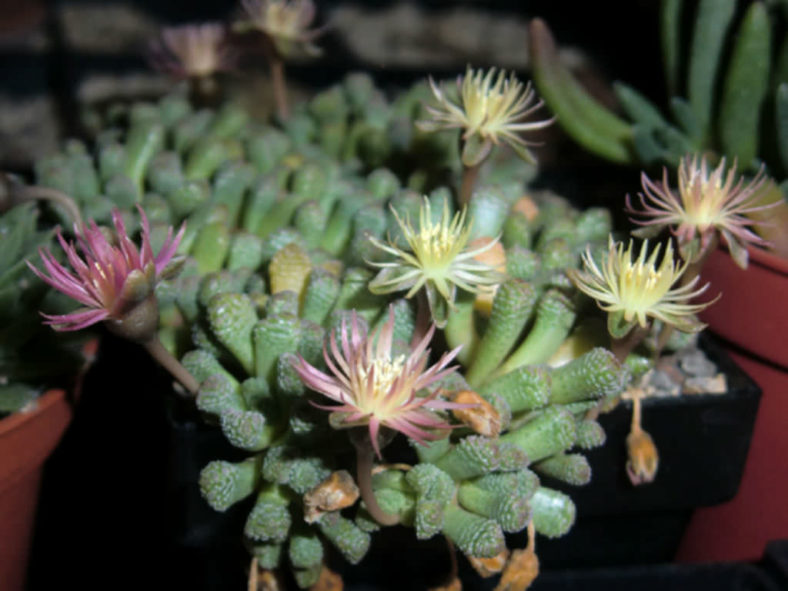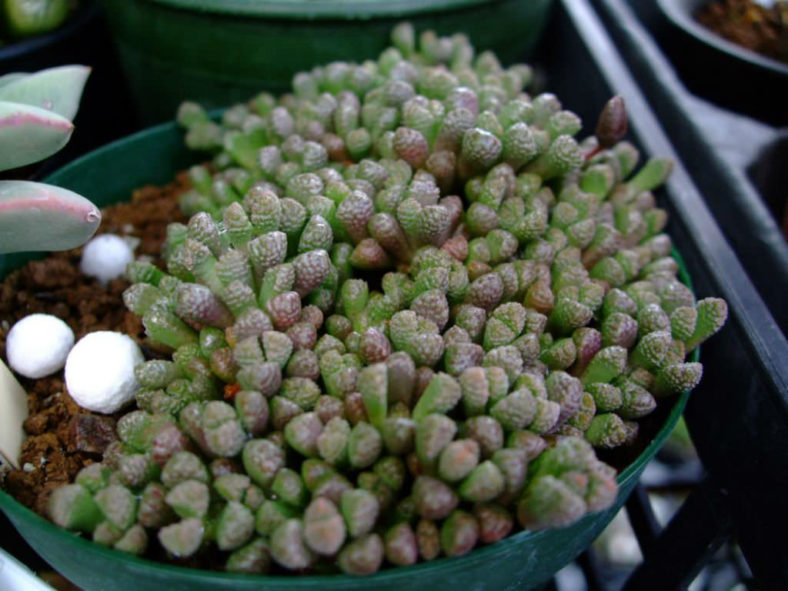Scientific Name
Neohenricia sibbettii (L.Bolus) L.Bolus
Synonym(s)
Mesembryanthemum sibbettii, Henricia sibbettii
Scientific Classification
Family: Aizoaceae
Subfamily: Ruschioideae
Tribe: Ruschieae
Genus: Neohenricia
Description
Neohenricia sibbettii is a small succulent with club-shaped, grayish-green leaves with a flat or roundish, rugose tip. It forms a low mat up to 0.4 inches (1 cm) tall and 12 inches (30 cm) in diameter.
The solitary flowers are star-shaped, white to pale green (in some populations entirely or apically purple), and appear from spring to summer.

Hardiness
USDA hardiness zones 9b to 11b: from 25 °F (−3.9 °C) to 50 °F (+10 °C).
How to Grow and Care
Mesembs are mostly adapted to relatively predictable rainfall patterns rather than extreme drought and irregular rainfall. Total rainfall may be extremely low, but water is available at least seasonally or through fog and condensation. This leads to or allows plants that are not especially large and sometimes very small and affects the way they need to be treated in cultivation.
The care basics are simple, with free-draining soil, plenty of sun and ventilation, and regular light watering in the right season. Yet the difficulties are endless, trying to adapt to the Mesembs' adaptability and to follow their growth habits in your particular conditions.
These plants require a loam-based compost with extra drainage material such as horticultural grit or perlite. They all like good light conditions and plenty of ventilation.
Some are relatively cold-hardy and can even survive mild winters outside. Most will withstand temperatures down to the freezing point. Some Mesembs begin to grow in the fall as the temperature drops and the days get shorter.
See more at How to Grow and Care for Mesembs.
Origin
Neohenricia sibbettii is native to South Africa.
Links
- Back to genus Neohenricia
- Succupedia: Browse succulents by Scientific Name, Common Name, Genus, Family, USDA Hardiness Zone, Origin, or cacti by Genus
Photo Gallery
Click on a photo to see a larger version.


